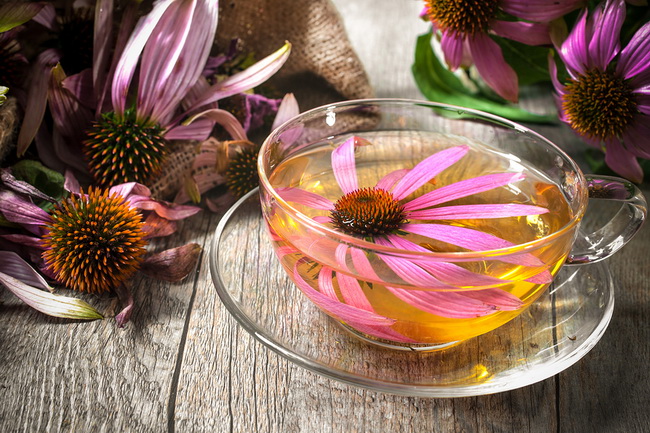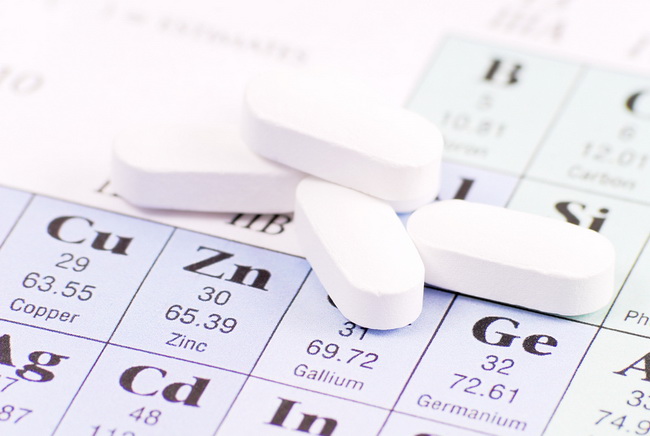- Make It Yourself Lavender Heart-Shaped Bath Bombs!
- 20 Things You Never Knew About “Down There”
- 12 Best Foods For Those Suffering From Arthritis Pain
- 12 Personal Hygiene Mistakes Almost Everyone Makes (Mom Never Told You About #4!)
- 15 Medicinal Plants And Herbs From The Cherokee People
- 12 Mind-Blowing Benefits Of Drinking Coconut Water During Pregnancy
- 12 Outstanding Winter Foods That Won’t Fatten You Up Like A Christmas Turkey
15 Natural Ways To Stop Impetigo (#4 And 9 Are Super Effective!)

Photo credit: bigstock.com
Impetigo: If you have already had this or had a family member afflicted with this, you know how painful this skin condition can be.
For those of you who have been lucky enough to avoid this highly contagious skin infection thank your lucky stars!
This infection of the skin is caused by one of two strains of bacteria: streptococcus pyogenes or staphylococcus aureus. It usually affects the face, neck, legs, and arms but it can actually occur anywhere on the body.
The bacteria make its entrance through a cut, insect bite, or other openings in the skin. It is not uncommon for those suffering from other types of skin problems such as eczema or scabies. There are several types of impetigo, but they all share common symptoms such as red sores or pustules that pop or tear open quite easily, a tan colored crust that forms after the sore breaks open, itchy, red skin, fluid filled blisters, skin rash, painful lesions and swollen lymph nodes.
This is quite common in toddlers and those attending grade school but it can happen to anyone at any age.
Treatment for this condition depends on the severity of it. For many people, the infection is mild, confined to one area, and can be treated with old fashioned good hygiene methods and some natural remedies.
Of course, if your symptoms should become worse or if it begins to spread, you should consult a physician.
Most people find relief from one or more of the following natural remedies for impetigo. We have compiled a list of 15 of the most effective remedies so keep reading!
Continue to Page 2

Photo credit: bigstock.com
1. Echinacea
Hundreds of years before the discovery of antibiotics, Native Americans and folk healers used Echinacea for treating infections. You can use Echinacea both internally and externally to help speed healing. Echinacea is generally sold as tea. Drink three or more cups of Echinacea tea each day to improve your own immune system and fight this bacteria from the inside out. You can also make a compress by soaking a wash cloth in cooled tea and placing it over the infected areas for 10 minutes at a time. Repeat this three or more times each day. You should always use a clean wash cloth and wash the cloth in hot water afterwards to avoid spreading the infection to other parts of your body or to other persons.
2. White Vinegar
To encourage healing, you should use an antibiotic wash to keep the area clean. White vinegar is a terrific antibiotic that is completely natural. This will help to stop the spread of the infection and dry up the sores. Mix 1 tablespoon of white vinegar in 2 cups of warm water. You can apply this solution to the affected area using a cotton ball or simply pour it over the skin. Pat the skin dry. You can apply an over the counter antibiotic ointment if you like but this is optional. Do not scrub the area as you might spread the infection and it will irritate the skin further. Repeat this two or three times each day.
3. Myrrh Oil
This is an old home remedy that works remarkably well. Research studies have shown that myrrh oil improves the immune system in the body. It also has anti-inflammatory compounds that can reduce the redness caused by inflammation. Old home remedies call for mixing a few drops of myrrh oil in some raw, organic honey. Honey is also a natural disinfectant and has been used to stop infections for hundreds of years. Honey and myrrh oil will soothe the irritated skin and speed healing. Apply this mixture of myrrh oil and raw, organic honey to the affected area using a cotton ball. Allow it to work for 20 to 30 minutes, and then rinse off with warm water. Pat the area dry and cover with gauze. Repeat twice each day.
4. Heat Therapy
Using heat will kill the bacteria that cause impetigo. It also dries up the sores caused by these bacteria. Soak a washcloth in hot water and wring it out. Apply the hot washcloth to the affected area for 2 or 3 minutes, rinse and repeat. Do this three times or more each day. Always use a clean washcloth and wash used cloths in hot water to avoid spreading the bacteria. Some people say that using a blow dryer on the area three times each day (use at the lowest setting to avoid burning your skin) helps to kill the bacteria and dry up the sores quickly.
5. Ginger and Turmeric
These spices both have powerful anti-inflammatory compounds that stop the pain and redness of impetigo. Consume three or more cups of ginger tea each day as well as mixing one tablespoon of turmeric powder in a glass of warm milk and drinking this once each day. You can also apply turmeric to the wound to encourage healing. Mix some turmeric powder in either some olive oil or coconut oil and suing a cotton ball, apply this mixture to the affected area. Allow it to work for 20 to 30 minutes, and then rinse it off with lukewarm water. Repeat two or more times each day for quick results.
Continue to Page 3

Photo credit: bigstock.com
6. Tea Tree Oil
Tea tree oil has powerful antimicrobial and anti-inflammatory compounds that not only offer relief from the symptoms but can stop the spread of this infection. Add three drops of tea tree oil to 1 tablespoon of olive oil or coconut oil. Apply this mixture to the affected area using a cotton ball and allow it to work for 20 to 30 minutes. Rinse off with lukewarm water. Repeat three times each day. You can also add a few drops of this essential oil to a small bucket or large bowl of water and rinse the affected area twice each day. Never apply tea tree oil directly to the skin as it will only irritate it further.
7. Olive Oil
Olive oil has been used in traditional medicine for untold centuries to help stop infections such as impetigo. Studies show that olive oil has two powerful antibiotic compounds: oleuropein and rutin. Simply by applying three or four drops of olive oil to the affected area several times each day, will kill the bacteria that causes this annoying and painful infection. Olive oil will prevent impetigo from spreading to other areas as well as clearing up the sores.
SEE ALSO: How to Use Olive Oil as Medicine
8. Grapefruit Seed Extract
Grapefruit seed extract is super effective at curing impetigo. This non-toxic disinfectant also has antibacterial and antioxidant compounds that give this skin infection the old one two punch. Add a few drops of grapefruit seed extract in about 2 tablespoons of water, depending on the size of the area you need to cover. Soak a cotton ball in this solution and apply it to the infected area several times each day. You might feel some itching at first, but this is just a sign that it is working and it will stop soon. You can also take grapefruit seed extract in a supplement form to help speed healing but speak to your doctor about the proper dosage for you.
9. Colloidal Silver
This healing agent is a must have for anyone interested in stopping infections and viruses naturally. Bacteria and viruses cannot live in the presence of silver, which is why you will find many bandages coated in silver. Apply a few drops of colloidal silver to the affected area or apply some using a cotton ball. Repeat this three or four times each day. Although there are no actual studies involving colloidal silver and impetigo, numerous reports from users state that their infections dried up within 48 hours and disappeared completely within 7 to 10 days.
10. Garlic
Garlic is a natural antibiotic that can help kill bacteria. It will also help to relieve the itch and pain. Warm two tablespoons of sesame oil and then fry two or three minced organic garlic cloves in the oil. Cool completely, then strain. Using a cotton ball, apply this garlic oil to the affected area twice each day.
Continue to Page 4

Photo credit: bigstock.com
11. Dietary Changes
Eating a healthy diet and making a few changes to it can not only fight the infection but it will improve your immunity and encourage a speedy recovery. First, be sure to eat plenty of fresh, organic vegetables and citrus fruits each day. You should also drink two glasses of apple, orange, or grapefruit juice each day. Add plenty of omega-3 fatty acids to your diet in the form of salmon or tuna, at least two or three servings each week. Avoid fried foods and sugary foods and remove red meat from your diet until the infection is gone.
12. Manuka Honey
Although all honey has antibacterial and antiseptic compounds, manuka honey is the king of honeys when it comes to healing compounds. Manuka honey inhibits the growth of bacteria and stops the spread of it as well. Simply spread the manuka honey on the affected area and allow it to work for an hour or two then rinse with lukewarm water. You can also eat two teaspoons of manuka honey each day to encourage your body to fight the infection from within.
13. Zinc
Zinc is absolutely vital when it comes to improving your own natural immunity. Zinc interacts with your cells to neutralize bacterial infections like impetigo. It also balances out your immune response. Add more zinc rich foods in your diet such as nuts, beans, whole grains, and shellfish. You can also consume a zinc supplement but speak with your doctor to ensure you get the right dosage for your unique situation.
14. Goldenseal
This herb has been used for centuries for treating infections. It strengthens the immune system as well. Goldenseal has proven antibacterial and antiseptic compounds that will disinfect the skin. You can apply a cream or lotion that contains goldenseal or rinse the area with warm (not too hot!) goldenseal tea. You can also drink two or three cups of goldenseal tea each day.
15. Aloe Vera
If it involves the skin, aloe vera can help. The gel from the aloe vera plant has been shown to have anti-inflammatory, antibacterial, and antiseptic compounds that can help the skin repair itself quickly while stopping the infection from spreading. Apply aloe vera gel (available at all health food stores) directly on the affected areas using a cotton ball. Allow it to work for 30 minutes, and then rinse with lukewarm water. Repeat two or three times each day. You can also drink aloe vera gel to improve your immune system to fight impetigo naturally.
Extra Tips:
- Stay home for a few days to avoid spreading this highly contagious infection to others
- Avoid touching the area as much as possible
- Wash your cloths, linens, and sheets in hot water
- Take a bath or shower every day to help kill the infection
- Do not scrub the area
- Do not pick or scratch at the infection
- Wash your hands frequently
References:

































Miss Cellany
Jan 20, 2017 at 12:56 pm
Coconut oil works too, and helps the skin to heal.